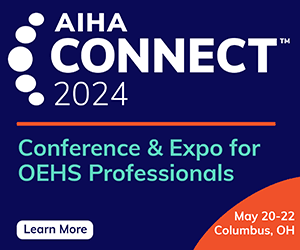CPR & AEDs, Increasing the Odds for Survival
CPR Helps Save Lives. That’s why more than 30 states now require students to receive CPR training before they graduate from high school. Many of these states also require that students be trained to use an automated external defibrillator (AED).
CPR + AED = even more lives saved.
The evidence is indisputable: high-quality CPR is the primary component in influencing survival from cardiac arrest.1 Not every patient will need a defibrillating shock, but every patient will need CPR to increase the flow of oxygenated blood to the heart and brain.
Even for seasoned health care professionals, it’s hard to know if you are pushing hard enough and fast enough to meet current AHA Guidelines for compression rate and depth. With ZOLL’s proprietary Real CPR Help technology, you know. It provides audio and visual feedback that guides rescuers to deliver high-quality CPR. ZOLL introduced Real CPR Help® in 2002, and it is standard on every AED and professional defibrillator ZOLL sells.
See Real CPR Help in action in this online demo at https://www.zoll.com/medical-technology/cpr/real-cpr-help/aed-demo.
Superior Support in a Rescue, 100% of the Time!
The ZOLL AED Plus® defibrillator with Real CPR Help provides integrated, real-time CPR feedback to help rescuers save a life. Only half of all sudden cardiac arrest victims will need a shock, but all will need high-quality CPR. Real CPR Help guides you every step of the way, telling you—and showing you—whether you need to “Push Harder” or whether you’re providing “Good Compressions.”
Not all heart rhythms are “shockable,” but high-quality CPR can potentially convert a non-shockable rhythm into one that is shockable. Even if this isn’t possible, CPR will keep blood circulating until emergency services arrives. If a shock is required, CPR must begin immediately after the shock is delivered. The heart struggles as it tries to restore to a normal rhythm. Without CPR, a shock alone may be ineffective. Whether the victim requires a shock—or not—the AED Plus will support you 100% of the time.
Focused on CPR Quality
High-quality CPR improves survival from cardiac arrest, and rescuers need to “maximize the quality of CPR” to save more lives.1,2
High quality means providing compressions at the proper depth and rate, making sure not to lean on the chest, and keeping interruptions to an absolute minimum. In its 2015 Guidelines, the American Heart Association identifies five critical components required to provide high-quality CPR:
- Compression rate of 100–120 per minute
- Compression depth of 2–2.4 inches (5–6 centimeters)
- Avoid leaning on the chest to allow for full recoil after each compression
- Minimize pauses in compressions (chest compression fraction > 60%)
- Avoid excessive ventilation (2 breaths/30 compressions without advanced airway; 10 breaths/minute with advanced airway)
Rescuers at every experience level need assistance when delivering CPR. The Real CPR Help technology on ZOLL AEDs and professional defibrillators assists lay rescuers and health care professionals alike in delivering high-quality CPR to meet the guideline recommended rate and depth.
How Real CPR Help Works
Using accelerometer technology, a sensor inside ZOLL’s CPR electrodes captures the rate and depth of each compression. Once the electrodes are placed on the patient, the person providing CPR presses on the clearly marked hand placement indicator that covers the sensor. The information captured is sent to the defibrillator, where it is immediately processed and provided in real time to the rescuer.
This real-time feedback is a critical component in reaching high-quality CPR. With audio and visual prompts to push harder, rescuers can immediately adjust their CPR as needed to reach the most effective rate and depth of compressions.
Chances of Survival More than Doubled
Studies in Arizona and California prove that high-quality CPR saves lives and that Real CPR Help can improve CPR quality.3,4 A large study of EMS providers in Arizona showed that the odds of survival increased 2.7 times with ZOLL’s industry-exclusive Real CPR Help and scenario-based training.3 And survival to discharge and good neurological outcomes doubled after the implementation of a “resuscitation bundle” at the University of California San Diego Medical Center that included Real CPR Help and specialized training.4
In a sudden cardiac arrest emergency, the victim’s best chance for survival is immediate CPR and a rescuer with an AED. Many people may not realize how critical effective CPR is in determining a victim’s outcome. ZOLL’s Real CPR Help guides rescuers at every experience level with real-time feedback to give them the confidence that they are providing potentially life-saving, high-quality CPR. WMHS
www.zoll.com/aed , Chelmsford, MA
1Meaney PA, et al. Circulation. 2013 Jul 23;128(4):417–35.
2Neumar RW, et al. Circulation. 2015;132(suppl 2):S315–S367.
3Bobrow B, et al. Annals of Emergency Medicine. July 2013:62(1):47-56.31.
4Davis DP, et al. Resuscitation. 2015 Jul;92:63-9
Share on Socials!
Casella Unveils New VAPex Pump
Occupational and Environmental Health and Safety Professionals Urge Trucking Industry to Protect Workers From Health Hazards
AIHA Announces New 2021-2022 Board Members
Leaders in Industrial Hygiene
Council for Accreditation in Occupational Hearing Conservation (CAOHC)
Subscribe!
Sign up to receive our industry publications for FREE!










